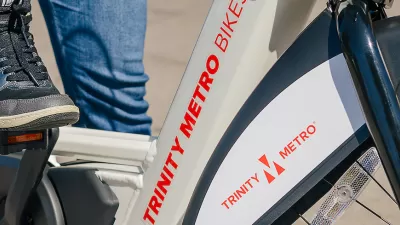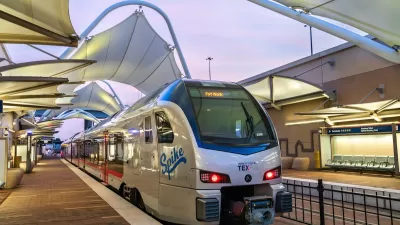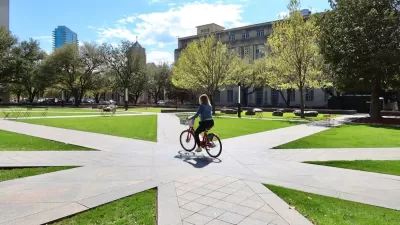The city of Fort Worth is moving to a site formerly occupied by the headquarters of Pier 1.

Fort Worth Mayor Betsy Price announced a plan last week to move City Hall to a location formerly occupied by the headquarters of Pier 1. The new location is on the western edge of the city's downtown.
"Mayor Betsy Price said it will save tens of millions over building a new complex, where cost estimates were running above $200 million," according to an article by CBS DFW.
The city's current facility was constructed in 1971—since then the city has been growing quickly both in terms of size and population. To build a City Hall commensurate with the city's new size and stature, the initial plan had been to build a new City Hall next to the existing structure.
According to the article, the purchase of the former Pier 1 site might prove to be more of a strategic opportunity, resulting in "cost-savings for taxpayers through an accelerated timeline, a much lower acquisition cost, reduction of long-term operating expenses and elimination of annual payments for leased facilities."
"City Hall is the daily workplace for approximately 600 City staff from 13 departments. The current City Hall will be repurposed and remain as a municipal building," according to the article.
FULL STORY: City Of Fort Worth Buying Pier 1 Headquarters, Will Be New City Hall In 2022

Trump Administration Could Effectively End Housing Voucher Program
Federal officials are eyeing major cuts to the Section 8 program that helps millions of low-income households pay rent.

Planetizen Federal Action Tracker
A weekly monitor of how Trump’s orders and actions are impacting planners and planning in America.

Ken Jennings Launches Transit Web Series
The Jeopardy champ wants you to ride public transit.

Rebuilding Smarter: How LA County Is Guiding Fire-Ravaged Communities Toward Resilience
Los Angeles County is leading a coordinated effort to help fire-impacted communities rebuild with resilience by providing recovery resources, promoting fire-wise design, and aligning reconstruction with broader sustainability and climate goals.

When Borders Blur: Regional Collaboration in Action
As regional challenges outgrow city boundaries, “When Borders Blur” explores how cross-jurisdictional collaboration can drive smarter, more resilient urban planning, sharing real-world lessons from thriving partnerships across North America.

Philadelphia Is Expanding its Network of Roundabouts
Roundabouts are widely shown to decrease traffic speed, reduce congestion, and improve efficiency.
Urban Design for Planners 1: Software Tools
This six-course series explores essential urban design concepts using open source software and equips planners with the tools they need to participate fully in the urban design process.
Planning for Universal Design
Learn the tools for implementing Universal Design in planning regulations.
Ada County Highway District
Clanton & Associates, Inc.
Jessamine County Fiscal Court
Institute for Housing and Urban Development Studies (IHS)
City of Grandview
Harvard GSD Executive Education
Toledo-Lucas County Plan Commissions
Salt Lake City
NYU Wagner Graduate School of Public Service





























